If you want to learn the language of jazz, then transcribing a blues solo should be at the top of your list! But if you’re just starting to transcribe jazz solos, the task might seem daunting or way over your head. In fact many beginners who want to play jazz completely shy away from transcribing altogether, not realizing that it’s the very thing that will teach them EXACTLY what they want to know…
Years might pass before they finally realize that they should spend some high quality time with the recordings they truly admire, digging deep into the details of the music they love.
This does NOT have to be you.
You don’t need years to pass for you to come to this simple conclusion – that transcribing is something you can do right now, even if you’re a beginner…and a blues solo is an excellent place to start.
The form and transitions in a blues, the language and phrasing, the simple and familiar chord changes…all of these elements make transcribing a blues a highly beneficial and accessible starting point for beginners.
Will it be a challenge? You betcha!! Will you be frustrated? Constantly!!…But with each obstacle you overcome, you’ll make one breakthrough after another, and you’ll make a noticeable difference in your playing FAST.
Transcribing a blues solo is where it’s at…
In today’s lesson we’ll start you off with a few key points to keep in mind that will make your life a whole lot easier during the transcription process. Then we’ll detail some basic requirements that you’ll want to keep in mind when selecting a blues solo to work on…
And after that, we’ll share with you 8 awesome blues solos that are great for any jazz skill level, but approachable enough for beginners.
These solos will give you a solid idea of where to start – you can either take one of the suggested solos and get to work, or use them as a guide to choose your own blues solos that you want to work on.
By the end of today’s lesson, you’ll have everything necessary to get started transcribing your first blues solo…
5 Things to keep in mind when transcribing a blues solo
Transcribing is so much more than just writing music out note-for-note or copying someone else. Done right, it’s probably the most beneficial activity you can do to improve your jazz playing quickly.
But as a beginner trying to play jazz, you’re often told to focus on things at your level, or to use transcription books or jazz etude books to “bridge the gap to actual transcribing”…
Forget these crutches, and go right to the real thing…
The sooner you start transcribing, the sooner you’ll start UNLOCKING musical doors for YOURSELF, and the sooner you’ll start to come to your OWN conclusions and perspectives
The truth is, there’s no reason beginners shouldn’t start transcribing…but because of the difficulty and challenge involved, there are definitely some things to keep in mind as you get started on this path so you don’t get discouraged and give up.
Here are a few very important tips to remember about transcribing that will help you avoid a lot of headaches as you begin your transcribing journey…
1. There’s no such thing as EASY when it comes to transcribing

Later in today’s lesson we’re going to share with you a bunch of great solos for beginners…but this doesn’t mean they’re easy…
In reality, there’s no such thing as an easy solo to transcribe. Transcribing is hard! And many solos worth transcribing are even harder!!!
You have to learn to embrace the struggle…
Now, what makes these “beginner” solos great is NOT that they’re a piece of cake. It’s that they’re packed with valuable information in a fairly easy to hear way.
Even if you’re not a beginner, all of these solos will be challenging. But the only way to start is to start. So don’t worry about approaching something above your level…that’s how you improve!
2. You DON’T have to transcribe the whole solo

Something that makes transcribing especially difficult for beginners is their misconception that they have to transcribe a whole solo.
There is no rule that says you have to transcribe a full solo or even a full chorus!! So don’t let this be your excuse for not transcribing.
Just start, and get what you can.
It’s NOT about completing a solo. It’s about getting useful information by engaging in a challenging process that pushes you.
Almost every solo will have very tricky, fast, out of time, difficult to transcribe sections. As a beginner trying to learn the jazz language, don’t feel bad about skipping over parts of a solo or just grabbing a chorus or even a few lines.
It’s what you TAKE that matters. It’s not about completing a solo.
One beautiful line can completely change how you approach a ii V progression, a minor ii V, an altered dominant chord, or an entire section of a tune!!
3. Old recordings are NOT perfect
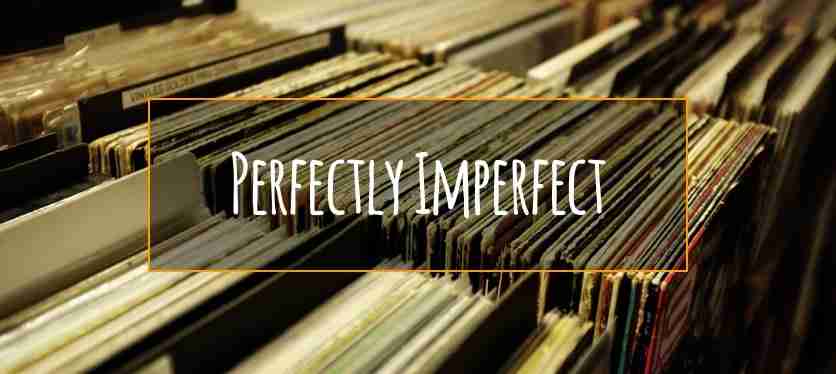
When you start to study tunes on the old recordings of the jazz masters, you might have difficulty hearing the exact pitches, the bass lines, or the piano voicings…
But this is just part of the game.
The recordings are old, so it’s only natural that the fidelity might be low quality or the pitch might seem off. In fact, sometimes the pitch is actually off.
Don’t let these things dissuade you from transcribing and playing along with your favorite musicians. Just be extra aware that old recordings have their idiosyncrasies and make sure you compensate for them.
4. Using the right tools allows you to HEAR better
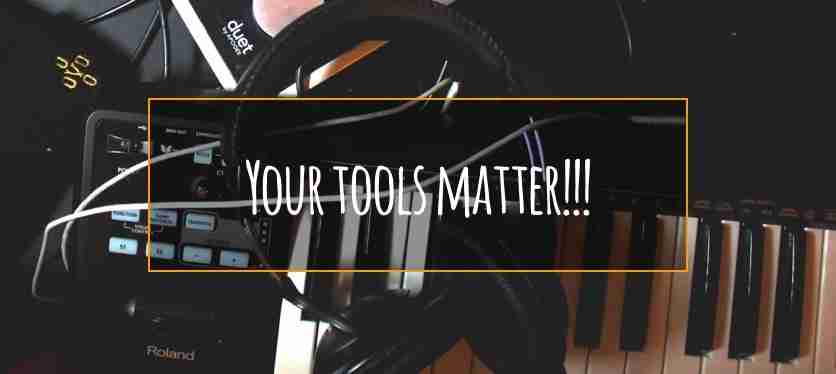
Another overlooked aspect of transcribing that makes it waaayyy easier has to with the tools you’re using.
I use 3 essential tools when I transcribe without fail:
I take these 3 tools everywhere I go and they make my life a whole lot easier and help me clearly hear and transcribe anything I might encounter.
Get the idea out of your head that it’s cheating to slow down music or to loop a section over and over so you can clearly hear it. It’s not cheating and it will help train your ear to hear the functions, intervals, and chord-tone colors.

Work on improving your ear constantly because without the ability to easily hear all the elements of jazz, transcribing will always be very tiresome. Start working on it now and in a couple months you’ll be surprised how much you can improve.
And when you’re transcribing, use anything that helps you to hear more clearly.
5. The Process IS the point
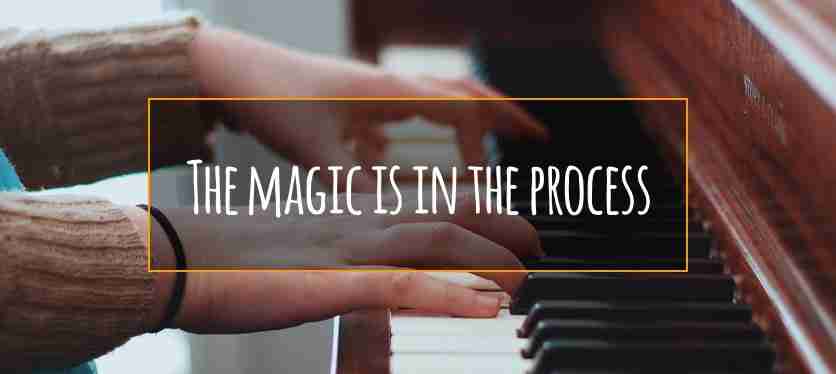
So much of the benefit of transcribing comes from the process itself – Listening over and over to the same line, imitating it until you can clearly make sense of it in your mind, ears, and fingers.
Copying the sound, articulation, feel, and vibe…
This is what matters, and it’s these things that you WON’T find in a transcription book.
Remember, when it comes to transcribing, the journey matters as much if not more than the destination.
5 Basic Requirements for Selecting Beginner blues solos
Okay, so now that you know what to keep in mind when you go to transcribe, let’s talk about how to go about choosing a blues solo as a beginner.
When choosing a blues solo to transcribe as a beginner, you can set yourself up for success if you select your solo based on these simple criteria…
- The tempo and time signature
- The quality of statements and eighth note lines
- The clarity of phrasing
- The use of standard blues changes
- The emotional impact on you
Let’s talk about each one…
1. The tempo and time signature
The first thing to think about is the tempo and time signature. Choose a solo in basic four-four time. Stay away from three-four or anything crazy.
And when it comes to the tempo, you want something that’s around medium or medium-slow. Obviously if the tempo is blazing fast, the solo will be pretty difficult, but if the solo is too slow, then the soloist will play a bunch of double time lines and tricky rhythms.
By selecting a medium tempo, you’ll be right in that sweet spot where people tend to play mostly blues statements and eighth note flowing lines. Which leads us to our next point…
2. A mix of statements and eighth note lines
There are two types of melodic lines that you want to be sure the blues solos that you study are packed with:
- Blues Statements – strong melodic phrases made up of primarily quarter notes and larger values that sound rhythmically decisive
- Strings of flowing eighth notes – melodic lines that flow through the changes using primarily eighth notes
Blues Statements are rhythmically clear and decisive, and actually don’t contain a lot of eighth notes or technical patterns. This type of melodic statement grew out of the blues tradition…think of a melancholiac blues singer belting out a soulful cry – that’s where this type of melodic idea and sound comes from…
And one of the primary purposes of blues statements is to balance out eighth note flowing lines, which is the other side of the equation…What we’re talking about here is a steady stream of primarily eighth note dominated lines that beautifully weave through the chord changes.
Of course within most eighth note lines there will be some quarter notes, dotted quarters, triplets, and more…and that’s not a problem…but you want to be sure that there are some hard-swinging eighth note dominated lines that beautifully flow through the changes.
You see, the worst feeling is spending all this time transcribing, and then later on realizing that there’s very little you can use…
But by selecting a solo with a mix of statements and eighth note lines, you can be certain there will be a ton of useful information you can take from the solo.
3. Clarity of phrasing and melodic statements
When you listen to a GREAT solo, each phrase transitions to the next effortlessly. Nothing sounds forced or inserted into a place it doesn’t belong.
The solo has a logical and seamless clarity of phrasing, which contributes to the overall musical story.
When you’re looking for a great blues solo to study, look for solos with this quality, where the phrases seem clear and logically flow from one to the next. And when you transcribe it, conceptualize and learn each phrase one at a time and then work on connecting them.
4. The Use of Standard blues changes
There are a million variations of blues chord changes, and as you probably know, blues chord changes don’t have that many changes. So, as soon as a blues tune starts to alter one or two chords, all of a sudden the tune has a totally different character.
And this can totally change how a soloist improvises over it…
So, when looking for a blues solo to transcribe as a beginner, you want the changes to be as standard as possible so the material you learn can be applied and easily heard and used in as many musical situations as possible.
And, watch out for tunes that have the word blues in the title, but are nothing of the sort…like Wayne Shorter’s Reincarnation Blues which hardly resembles a blues at all…
But on the flip-side, if a blues tune uses a single subtle variation or substitute chord and you’re aware of it, don’t discount it as a viable option because it may be a great choice, Like Miles on Freddie Freeloader…
5. The emotional impact: You have to LOVE it
Anything you transcribe becomes a part of you, so even as a beginner, be aware that there’s no must-transcribe-list of solos.
Use YOUR ear and make sure you work on blues solos that have an emotional impact on you.
Not only will this help develop your musical voice toward the sound you love, but the more you like a solo, the more you’ll be motivated to spend time with it and learn from it.
8 Blues Solos for Beginner Jazz Students to Transcribe
Now that you know what to look for when choosing a blues solo to transcribe as a beginner, let’s dive into a few great examples that meet our requirements.
Keep in mind that no solo is “the perfect beginner blues solo,” and that most solos won’t 100% meet all the criteria we talked about.
But what’s important is that they generally follow the guidelines we talked about and that you’re genuinely excited about the solo.
SOLO #1: Miles Davis on Trane’s Blues
Miles Davis is one of the BEST musicians for a beginner to transcribe, especially if you carefully select the specific solo to work with. His solo on Trane’s Blues meets all our basic requirements and more!
Take your time when studying Miles and really get into how he constructs his phrases, how he develops ideas, and how he interacts with the band.
Why it’s a great solo to transcribe for a beginner:
- It’s slow and easy to approach
- His phrases are so defined, it’s as if Miles composed the solo before-hand
- The language he uses will teach you how to make solid statements on the blues
What to pay special attention to:
- His use of space
- How he constructs simple phrases that swing and are melodically interesting
- How he continuously plays over the bar line
Let’s get you started transcribing Miles…

To get you started with this Miles solo, we’ve begun to transcribe the first chorus for you. The first phrase is written there for you. Go ahead and transcribe it yourself and see if you come up with the same melodic line and rhythm.
And then figure out the second phrase…
The third phrase we’ve done for you, and the fourth phrase is all up to you…
To think, all you have to do is transcribe two phrases and you’ll have a full chorus of Miles on the blues.
No excuses. Better get to work!!
SOLO #2: Charlie Parker on Cool Blues
Want to transcribe Charlie Parker but don’t know where to start? Well, you’re definitely not alone. Many of his solos are packed with lightening speed eighth or sixteenth notes, with complicated rhythms and harmonies added on top.
No wonder most people just go to The Omnibook, to study Charlie Parker!!
But it’s the musicians that do the work themselves that get the best results…
Even in one single Charlie Parker line, there’s a vast amount of melodic, rhythmic, and harmonic information you can take and learn from. But for a beginner, many Charlie Parker solos will be too complex…when you first are getting into studying Bird, finding a solo that’s slower and simpler is essential…
And his solo on Cool Blues is a great place to start.
In this solo, Parker’s playing some beautiful lines that even as a beginner aren’t too difficult to learn.
However, keep in mind that rhythmically, Bird is one of the most difficult players to copy – he has a way of playing behind, in front of, and between the beats that will drive you crazy when you try to write his lines down.
The key is not to stress about it and focus on just PLAYING the lines perfectly.
If you can accurately reproduce the phrases on your instrument, that’s what counts at this stage.
If you want to write them down, that’s cool, too. Just do your best to interpret the rhythms as accurately as possible even if they’re not perfect, and come back to them later as you develop your rhythmic understanding.
Why it’s a great solo to transcribe for a beginner:
- It’s approachable enough for a beginner, which you can’t say for many Charlie Parker solos
- It contains great Parker bebop language
- It will get you on the path of studying Bird early
What to pay special attention to:
- Where he starts and ends his phrases
- His use of enclosure and other ornaments
- The way he plays with the time
Let’s get you started transcribing Charlie Parker…Here’s the opening line of the first chorus…

Now, it’s up to you to transcribe the next phrase which moves through the transition from I7 to IV7…
Charlie Parker is one of the primary inventors of the great music we call jazz. Don’t let his crazy lines and complex sense of time stop you from transcribing him as a beginner.
Get into Bird’s playing early by finding solos like Cool Blues that are a bit more approachable than some of his others. Then, gradually work your way up toward more difficult Charlie Parker solos.
SOLO #3: Sonny Rollins on Tenor Madness
Sonny Rollins is one of the greatest tenor players of all time. His concept of swing, time feel, and how he develops his ideas make his solos a whirlwind of drama and interest.
And as a beginner, it’s easy to fall in love with one of his classic solos and learn everything you can from it.
One of my favorite blues solos is his solo on Tenor Madness.
Compared to Coltrane’s double-time packed solo, Sonny’s is much more accessible for a beginner.
Why it’s a great solo to transcribe for a beginner:
- It’s packed with great jazz language and ii Vs
- It’s clear and slow enough for a beginner who wants to work hard
- He plays with a great sound, phrasing, and nails the transitions
What to pay special attention to:
- How he develops motives and small ideas into larger ones
- How he uses bebop language but in his own unique way
- How he balances statements and eighth note lines
Let’s get you started transcribing Sonny Rollins…
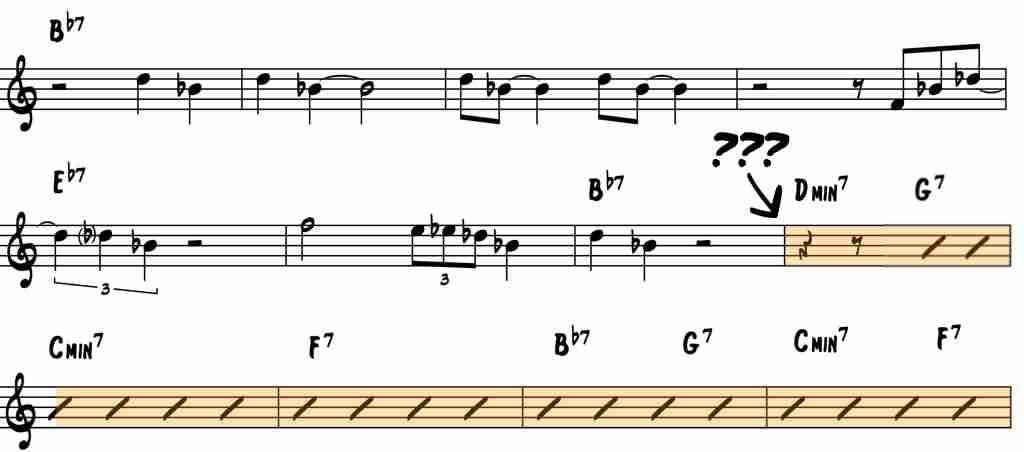
We’ve done the first few phrases for you…now go ahead and transcribe the transition to the ii chord along with the rest of the first chorus…then keep going!!
You won’t regret it…there’s so much to learn within every line Sonny Rollins plays.
SOLO #4: Hank Mobley on Dig Dis
One of the greatest tenor players you’ve probably never spent much time listening to…the great Hank Mobley.
Overshadowed by guys like Trane and Sonny Rollins, people often overlook this classic jazz legend. His solo on Dig Dis from my personal favorite Hank Mobley album, Soul Station, is a great blues solo filled with knowledge…
Why it’s a great solo to transcribe for a beginner:
- Lots of classic easy to steal bebop lines
- Very clear sense of logic mixed with intuition that you can learn from
- Easy tempo and simple ideas
What to pay special attention to:
- His unique vocabulary and how he gets a lot of milage out of it
- How he plays over ii Vs
- How he makes blues statements
Let’s get you started transcribing Hank Mobley…
Like we emphasized earlier, you don’t need to transcribe a whole solo, or even a full chorus. JUST START TRANSCRIBING!!
Here’s a great example of this…Maybe you’re listening to Hank, and these four bars catch your ear…

This beautiful line Hank plays takes place on the last four bars of the blues form – when you split the blues into three pieces of 4 bars each, it’s the last four bars, the last piece…

As you transcribe lines over a blues form, it’s super advantageous to know which piece of the blues a line takes place on or between.
And, it’s a great idea to transcribe multiple lines over the same spot…
By grabbing lines in the same spot on a blues or in any tune, you can compare what the soloist is doing each time and gain deep insight into how the player thinks about that piece of the chord changes.
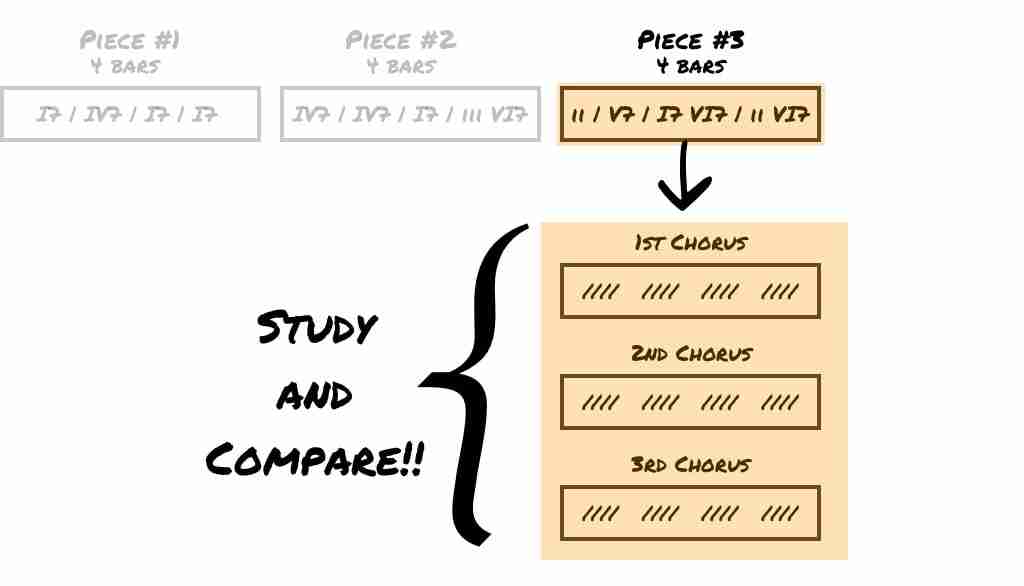
Do an experiment and try transcribing what Hank plays over this piece of the blues form during 3 different choruses and you’re sure to learn a lot!
SOLO #5: Wynton Kelly on Dig Dis
Often, if one of the solos on a specific blues tune is a great solo for a beginner, then the other solos played by the other instruments will be great for beginners as well, as it is in this case…
Here, we’re looking at what the piano player is playing on Dig Dis…the one and only Wynton Kelly.
Like Hank’s solo, it’s perfect for a beginner…
In general, Wynton Kelly solos are great for a beginner and typically use a healthy mix of blues statements and flowing eighth note lines. If you’re a piano player looking to find your first blues solo to study, definitely check him out.
Why it’s a great solo to transcribe for a beginner:
- He plays clear blues statements that are easy to copy
- He uses a straightforward sense of rhythm and time
- He plays basic jazz language that will help a beginner tremendously
What to pay special attention to:
- How he develops his solo
- How he changes between playing blues statements and eighth note lines
- How he gets through ii Vs and turnarounds
Let’s get you started transcribing Wynton Kelly…Here’s the first line…

Now keep going and get the rest of Wynton’s solo…
SOLO #6: Gene Ammons on Blues up and Down
Gene Ammons and Sonny Stitt form one of the greatest tenor duos to ever live…
I can only imagine what it must have been like to see these guys live!!
One of their most famous recordings is the classic album Boss Tenors, where they showcase their tremendous skills on Blues Up and Down.
Both of these tenor titans lay down one perfect bebop line after another as if they’re not even trying. It’s effortless!
Why it’s a great solo to transcribe for a beginner:
- His swing and feel encapsulate the blues feeling in ea way you can easily hear
- The solo has a nice mix of typical blues language mixed with bebop lines
- He makes use of simple blues riffs that can help you understand the blues
What to pay special attention to:
- How he integrates his blues language with a more traditional jazz approach
- Where he scoops and ornaments the sound and what effect it has
- His blues statements and how he repeats ideas several times
Let’s get you started transcribing Gene Ammons…Here’s a great line that he opens up with during a section where Ammons and Stitt are trading choruses…

Every single line he plays is clear and concise, making it great for a beginner to transcribe.
This solo has a bunch you can steal and while slightly more difficult at points, so does Sonny Stitt’s. Study these two Boss Tenors and you’ll elevate your blues playing to a new level!
SOLO #7: Kenny Dorham on Chicago Blues
The great Kenny Dorham is another underrated musician that you probably haven’t spent much time listening to.
And on this recording, he not only plays trumpet but he sings!! First, listen to Kenny Dorham sing the blues, and then get ready as he takes a perfect solo…
His sound, time-feel, and language all come together to make a perfect blues solo. Don’t underestimate this amazing trumpet player!
Why it’s a great solo to transcribe for a beginner:
- The eighth note lines are fairly simple rhythmically and harmonically
- The bebop language he uses here is easy to conceptualize
- His sense of forward motion and time will help you nail blues transitions
What to pay special attention to:
- How he constructs eighth note lines that lead somewhere
- How he shapes his lines and varies their direction
- His swing concept and time feel
Let’s get you started transcribing Kenny Dorham…
Remember, you don’t have to start with the first chorus…it can be ANY chorus that speaks to you.
Perhaps the 2nd chorus really moves you…listen to this perfect eighth note line at the start of it…
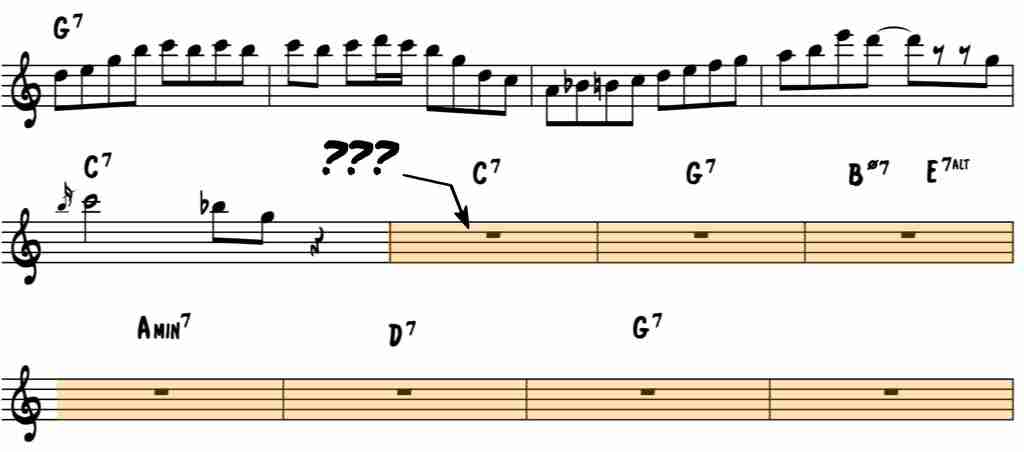
Now, can you figure out what he’s doing the rest of the chorus??
SOLO #8: Wes Montgomery on D-Natural Blues
Wes Montgomery is one of the best and most classic jazz guitarists…
However, like Charlie Parker, it’s sometimes difficult to find a solo that’s approachable enough for a beginner to get into.
But, his solo on this D Natural Blues fits the bill…
If you want to get into Wes Montgomery’s playing but don’t know where to start, this solo could be your entry point…
Why it’s a great solo to transcribe for a beginner:
- It’s easy to hear and play most of the lines
- It contains some of Wes Montgomerys signature licks and concepts
- It’s an accessible way into his playing
What to pay special attention to:
- How he emphasizes upbeats and his keen sense of rhythm
- His use of anticipation and how his lines move forward
- How he develops his solo as a whole
Let’s get you started transcribing Wes Montgomery…
Keep in mind, when a blues is a bit slower like this, the musician might primarily play double time lines, even though they don’t sound fast.

When rhythms are difficult to write down like this, sometimes it helps to first notate them at half the speed by simply doubling the rhythmic values…

And then, once you do this, divide the rhythmic values in half to translate it into the actual rhythms going on – quarter notes become eighths, eighth become sixteenths…

Notice how the two measure pieces of the first line, transform into one measure pieces in the second…
Don’t ever let tricky rhythms stop you from transcribing!! Do the BEST you can and just go for it…Use this trick to transcribe the rest of Wes Montgomery’s solo on this blues!!
Getting started transcribing a blues solo
The solos we’ve gone over today are all excellent starting points for learning how to navigate the blues. If one in particular stood out to you, use that as momentum to take it upon yourself to begin the process of transcribing it.
Don’t let anything stop you. If you truly love jazz, then study it from the SOURCE – the recordings of your heroes.
No excuses. It doesn’t matter that you’re a beginner, or that you’re approaching something above your current level. By at least trying, you’ll get a sense of what it’s like and what you need to improve to make the process easier.
Maybe you need to work on your ear training, or understand jazz theory on a deeper level.

But the sooner you get started, the sooner you’ll start to build a strong foundation with jazz language over the blues form, which will unlock so many doors that you don’t even know exist right now.
Most importantly, have fun and use the process of transcribing to constantly explore and discover new information that expands your jazz improvisation concept. Here’s to getting started transcribing the blues!!










